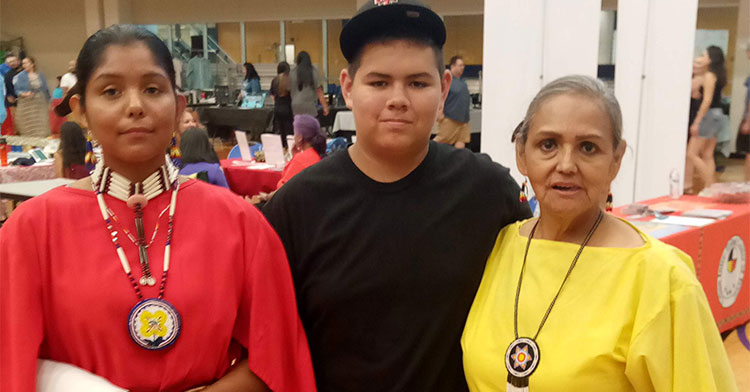While during November—Native American Heritage Month—Dallas ISD celebrates the 574 federally recognized tribes in the United States, their heritage, history and contributions are celebrated and supported year round through the American Indian Education Program.
This program was designed to address the unique educational and culturally-related academic needs of American Indian and Alaska Native students from pre-K through 12th grade. Students who identify as American Indian can apply for the program, which provides cultural events and enrichment programs, college and career preparation, truancy and retention support, culturally competent counseling, representative book clubs and more.
“Our ultimate goal is to have our Native American students walk across that stage equal to every other population,” said Tracy Palmer, an American Indian Education Program specialist and a registered member of the Muscogee Creek Nation Tribe of Oklahoma. “We are here to serve, and join hand in hand with Dallas ISD’s mission to educate all students for success. I am honored to say that our Native students have been high achievers.”
The program’s success can be seen in families like that of Sonia L. Pahcheka, now celebrating three generations and counting of Dallas ISD graduates.
Pahcheka and all three of her sons graduated from Sunset High School, and now her 11 grandchildren are following in their footsteps. Two of her grandchildren, Arthur “AJ” Pahcheka Ybarra and Christina Pahcheka Ybarra (pictured), currently attend W.E. Greiner Middle School and Sunset High School and have been in the American Indian Education Program since they were preschoolers.
“It has really taught them a lot,” Pahcheka said. “We are Comanche, and all we do is Comanche, but they got to make friends with [those from]other tribes at the program’s summer camp. When they see those friends now, they run up and hug each other. It’s lifelong.”
Her grandchildren have also learned to be more outgoing, and now Pahcheka said they are “all excelling” in school while being aware of their “own personal Native pride.”
“I have known AJ since he was a baby,” Palmer added. “Their family has been one of our greatest success stories, and I have enjoyed watching them grow and enrich so they can see the beauty of our culture and learn about themselves, while also exploring the program’s parallels in science, math, cultural reading, Native history and social studies.”
Palmer said she hopes the Dallas ISD community will not only spread awareness about the district’s American Indian Education Program, but will also take advantage of the resources available during Native American Heritage Month in November and beyond.
For example, teachers, librarians and campus administrators can request the American Indian Education Program’s grant-funded book club books, which include some of Palmer’s current favorites: “Fry Bread,” “Do All Indians Live in Tipis?” and “A Native American Thought of It: Amazing Inventions and Innovations.”
“We have some beautiful books that are identifiably Native with appropriate images and writing and that support the curriculum already at hand,” Palmer said. “Our students are gifted those books through our grant, but they can also go to any classroom, library or program that wants to teach students about American Indians.”
To learn more about Dallas ISD’s American Indian Education Program and the resources available to students and staff, visit https://www.dallasisd.org/Page/22033 or call (972) 925-8076.
“It’s a powerful program, and people need to know that we are here supporting our Native students,” Palmer said. “I am proud and honored as a Native American when they walk across that stage. I know then that they can compete to be able to work or continue on to a higher educational institution after graduation—and find their own destiny in our country.”

